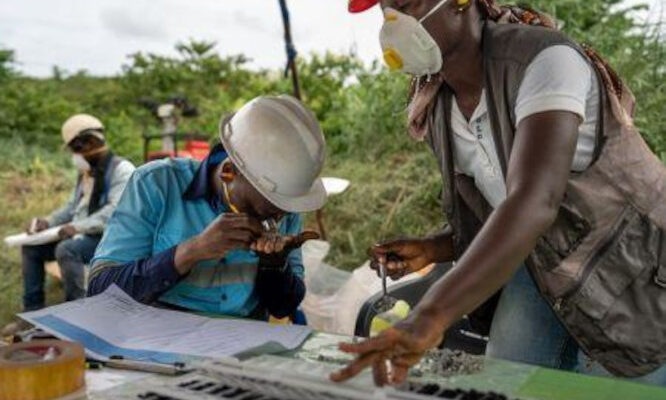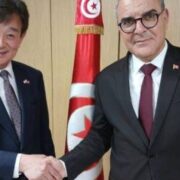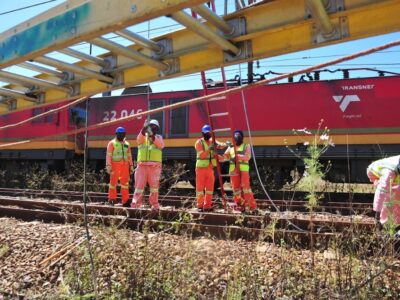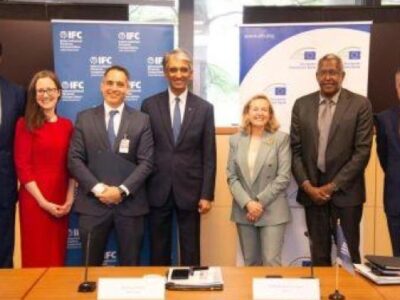
(Ecofin Agency) – Ghana’s Ewoyaa lithium mine is poised to produce 3.6 million tonnes of spodumene concentrate over 12 years. Half of this output has already been sold to the American firm Piedmont Lithium. The Ghanaian government plans to refine the remaining half locally with the mine owner Atlantic Lithium’s backing.
However, a March 2025 study by the Natural Resource Governance Institute (NRGI) warns Ghana could lose up to $500 million by rushing into local lithium processing. The study says the financial risk stems from the operation’s business model.
The Ewoyaa project, Ghana’s first lithium mine, could yield 3.6 million tonnes of spodumene concentrate over 12 years. Half is reserved for Piedmont Lithium under a long-term deal. Exporting the other half unprocessed could bring Ghana about $2.7 billion in royalties, taxes, and dividends. But processing it locally with Atlantic Lithium would reduce revenues to $2.2 billion.
The loss would be due to the fact that a Ghanaian refinery cannot buy concentrate at market prices without losing money. To be viable, the refinery must buy ore cheaper than Chinese refineries, which dominate the market. This vulnerability reflects the global lithium refining landscape.
China dominates the global lithium refining market, controlling most of the capacity to turn spodumene into lithium chemicals. This edge comes from technical know-how, huge economies of scale, and low operating costs. Outside China, lithium refineries struggle to compete. Two of the three spodumene refineries beyond China have scrapped expansion plans in recent years.
Also, a refinery in Ghana faces even bigger challenges than its Asian rivals. It would deal with higher startup costs, the need to import key chemical reagents, and uncertainty about selling or using by-products. More critically, the Ewoyaa mine alone cannot supply enough spodumene to run a full-capacity refinery, making the project’s economics shaky from the start.
The Natural Resource Governance Institute (NRGI) advises Ghana to hold off on building a refinery. Instead, it recommends starting mining operations first and closely monitoring the global lithium market. Key signals to watch include whether China’s overcapacity is absorbed, if regional demand for lithium carbonate grows, and whether battery and cathode manufacturing expands outside Asia.
NRGI stresses that refining will only make sense if there is enough spodumene supply to sustain a plant. Ewoyaa’s reserves alone won’t cut it. The government should push for new lithium discoveries in Ghana and talk with neighboring producers in Mali and Nigeria to coordinate ore supply. Pooling resources regionally could reduce investor risk and improve profitability for a shared refinery.
This cautionary approach goes beyond Ghana and lithium. It raises a broader question about the viability of local processing projects in African countries rich in strategic minerals. Without enough volume, solid industrial demand, or mastered technology, many local refining efforts risk being unprofitable.
Fragmented mineral production and isolated projects across Africa are holding the continent back from competing globally, especially against dominant Asian players. Whether it’s lithium, copper, or rare earths, the lack of scale prevents African producers from achieving the economies of scale necessary to cut costs and boost competitiveness.
Analysts increasingly call for a shift in strategy: instead of going it alone, African countries should cooperate regionally. The Democratic Republic of Congo (DRC) and Zambia have been exploring such partnerships for years. Pooling mineral volumes, sharing infrastructure, and coordinating industrial policies could secure supply chains and strengthen Africa’s bargaining power against major international buyers.
This article was initially published in French by Emiliano Tossou
Edited in English by Ange Jason Quenum











Comments